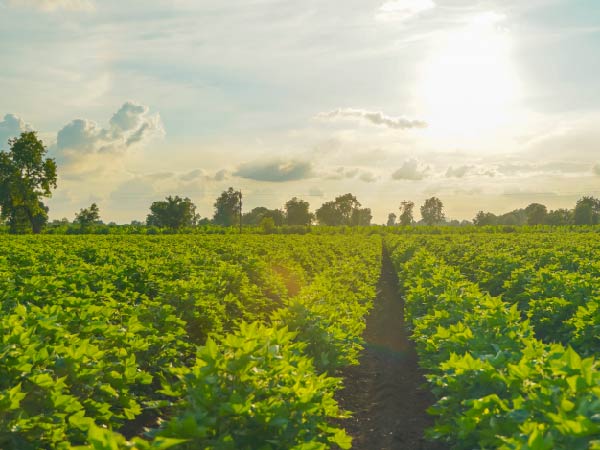Sustainable cotton is gaining market share. It already accounts for 30% of the global cotton crop, with 22% of the global crop certified by the Better Cotton Initiative alone, and the non-profit Textile Exchange aims to grow this to a 50% share by just 2025. Proponents of sustainable cotton come from across the industry; Better Cotton, the largest initiative in sustainable cotton, counts over 2,500 members amongst farmers, ginners, spinners, manufacturers, brand owners and more.
Cotton sustainability covers a broad range of themes, including human rights and farmer welfare, farming communities, soil and water management, pesticide use, biodiversity, and climate resilience. With so much ground to cover, it is no wonder that there are many different certification schemes within the global industry. Textile Exchange recognise fifteen such schemes, including the Better Cotton Initiative, Fairtrade, ABRAPA, Organic Cotton, and many others. Each certification scheme has a slightly different focus and qualifying criteria, with no sign of unified standards in the near future, which means that managing sustainable bales in your inventory is more complicated than a simple tick box.
And as cotton quality specifications are measured and reported to the bale level, cotton sustainability certifications need to be equally granular, and your Commodity Management System needs to be able to manage them to the same bale level across your contracts and operations.
Managing sustainable cotton in a Commodity Management System
When it comes to managing sustainable cotton in any inventory management or trading system, the first question to address is what exactly are you managing? Can you self-certify or follow a chain of custody model, for example, by simply adding the certification as an additional piece of quality information, or do you need to manage sustainability certificates? Can these certificates be uploaded according to a counterparty, or do they need to be at a more granular level? And how will they be tracked across your operations as bales are moved between warehouses and shipping containers and split from their original lots.
Using virtual lots
A good Commodity Management System allows you to create virtual lots, which are a digital representation of the physical bales. As you update your activities in the real world, such as receiving HVI data or loading a container, these virtual lots also update to provide a clear picture of exactly what is going on across your operations.
The virtual lots allow you to manage certificates and quality data across your digital processes as the virtual lots should mirror your activities in the real world. And modern Commodity Management Systems create and update virtual lots based on the activities your team carry out to manage them, without adding extra reporting or copying.
A good Commodity Management System that has been developed with cotton in mind, such as Gen10’s CommOS, can create these virtual lots with ease as well. For example, within CommOS they can be created simply by uploading a gin/take-up/pre-takeup file. And if sustainability data such as a particular verification scheme is included in this file, that information can be automatically added to the digital bale record.
These virtual lots have many other uses for cotton traders as well. They are essential for supply chain and inventory management as well as ensuring that sustainability attributes are tracked against every bale. And accurate virtual lots that update alongside your real-world activities also provide exceptional traceability. Depending on what information you received during the purchase, you can link each bale from the end client right back to the gin or individual farm.
Pricing sustainability
If you can accurately manage the sustainability data for each bale, you can accurately price it too. Bale-by-bale information means that you can match clients to the exact specification they need with ease so that your bales are allocated to the clients who are willing to pay a sustainability premium. Or, conversely, to ensure that all bales meet their sustainability criteria. Managing bale-by-bale allocations that incorporate this sustainability data means that you can ensure your sustainable bales are commanding a fair price.
In both pricing and managing sustainability data for cotton, flexibility is essential. You may need to source cotton from multiple programmes, particularly if you purchase cotton from different regions. And taking a longer view, it is difficult to predict the future development of certification schemes; whether there will be new entrants or more rigorous controls remains to be seen. It is therefore important to ensure that any technology you are using to support your cotton trading has the flexibility to incorporate new sustainability standards and new workflows both now and in the future.
Conclusion
Sustainable cotton’s market share is continually growing, and it will hopefully become more common than non-certified crops in the next handful of years. However, there are many different definitions of sustainability and many different certification schemes. This means that you may well need to manage cotton bales with complex and varying sustainability data. You therefore need a Commodity Management System with the sophistication to manage complex data across all your processes and the flexibility to adapt to new sustainability measures as the live situation develops.
If you’d like to find out more about how CommOS can support your cotton trading operations as well as help you manage complex sustainability and quality data with ease, get in touch with us now – we’d love to show you more.
This article is part of a series exploring CTRM and Commodity Management in cotton trading.



